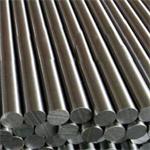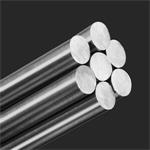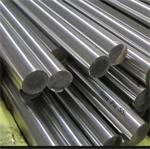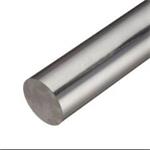316L stainless steel rod has a large-scale application in the chemical industry due to its excellent corrosion resistance. 316L is a derivative steel of 18-8 type austenitic stainless steel with 2-3% molybdenum added to the material.
316L stainless steel rods



On the basis of 316L, many steel grades have also been derived, such as 316Ti derived from the addition of a small amount of titanium, 316N derived from the addition of a small amount of nitrogen, and 317L stainless steel derived from the nickel and molybdenum content.
At present, most of the spot 316L stainless steel rods are produced according to the American standard.
From a cost perspective, steel mills typically reduce the nickel content of the product as much as possible. According to the American standard, the nickel content of 316L stainless steel rod is about 10-14%, and the Japanese standard stipulates that the Ni content of 316L should reach about 12-15%.
According to the ultra-low standard, there is a 2% difference in the Ni content between the American standard and the Japanese standard. The difference in the spot price is very large. Therefore, when purchasing the 316L product, it is necessary to carefully read it. Note that the product is based on ASTM or JIS. standard.
The content of molybdenum in the 316L stainless steel rod gives the steel a superior pitting resistance and can be safely applied to halogen-containing environments such as Cl-.
Because 316L stainless steel is mainly used for its chemical properties, steel mills have a slightly lower surface inspection requirement for 316L stainless steel (relative to 304 stainless steel rods), and customers with higher surface requirements should strengthen the surface inspection.
316L and 304 stainless steel rods have a considerable gap in price, and some bad traders will sell 304 stainless steel rods as 316L.
304 stainless steel rods do not have pitting resistance. If pitting perforations can cause leakage, this will cause a major safety accident in the chemical industry, because it is recommended to do a chemical composition analysis to ensure safety.
316 stainless steel rods



There are very few 316 stainless steels on the market today. The upper limit of carbon content of 316 is 0.08%, while the upper limit of carbon content of 316L is 0.03%.
Refining technology is very mature, steel mills can reduce carbon content very well, and the market demand for 316 is not large, so steel mills usually only 316L, if you need 316, you need to order steel mills.
316 and 316L also have a difference in performance due to the difference in carbon content.
The higher the carbon content, the easier it is to cause intergranular corrosion, if it is during soldering. Higher carbon content also enhances the tensile and yield strength of 316L stainless steel.
The upper limit of tensile and yield strength of 316 is 515, 205 MPa (ASTM A240M standard)
The upper limit of tensile and yield strength of 316L is 485 and 170 MPa (ASTM A240M standard)
The elongation and hardness specifications are the same, 40% and HB217 respectively.
According to the above data, it can be seen that if it is necessary to weld the steel grade, the 316L steel grade can be used. If welding is not required, then the strength of the steel is higher, and 316 stainless steel rods are used.